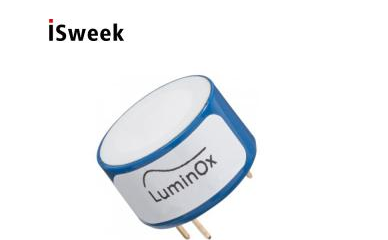What are the four advantages of the fluorescent oxygen sensor?
Fuel cell oxygen concentration detection technology was once the benchmark of oxygen sensing technology. The working principle of these oxygen sensors is similar to a battery that uses a consumable electrolyte that reacts with oxygen. However, the accuracy of the oxygen sensor has been questioned. Their cross-sensitivity with other gases and the consumption rate of chemicals used depend on the concentration level of the target gas. In this blog post, the editor will discuss in detail the four main advantages of solid-state oxygen sensors.
1. Low-cost solid-state oxygen sensor
Generally speaking, solid-state oxygen sensors have cost advantages over electrochemical sensors. There is a common misunderstanding that this technology requires an increase in upfront investment compared with electro-primary batteries, but this rarely happens. The non-consumable technology in the solid-state optical oxygen sensor can provide considerable long-term cost savings, which makes it appear that it offers additional cost-effectiveness compared to electrogenic batteries.
2. The solid-state oxygen sensor works in a wider temperature range
Electrochemical sensors are sensitive to temperature, so hardware or software methods need to be used for external compensation. The LOX-02 oxygen sensor has a built-in temperature and pressure sensor, which can work below freezing. LOX-02 can not only measure and compensate temperature, but also its two-wire communication interface can measure and transmit gas temperature and pressure.
3. long service life
One of the main disadvantages of the electrochemical oxygen sensor is the consumption of its work. Optical technology is usually based on non-consumable technology, such as fluorescence quenching, which uses oxygen-sensitive fluorescent dyes and is excited by pulsed light. This fluorescence is detected, and the change in fluorescence decay rate over time is measured as a function of ppO2.
The SST-sensing LOX-02 fluorescent oxygen sensor can be used for more than 5 years, providing long-term high-performance and very reliable oxygen measurement.
4. almost no cross-sensitivity
Electrochemical sensors usually come with a series of cross-sensitive gases that affect oxygen readings, thereby increasing or decreasing the output current. The optical solid oxygen sensor has the smallest cross-sensitivity with other gases, because the luminescence/fluorescence quenching of oxygen has a high selectivity for oxygen molecules.
5. SST sensing solid state oxygen sensor
SST Sensing focuses on gas sensing solutions and cutting-edge oxygen sensors for industrial applications. Gongcai.com provides zirconia oxygen sensors and optical oxygen sensors based on the principle of fluorescence quenching.

In addition, the LOX-02 series optical oxygen sensor from SST complies with RoHS and REACH standards, so lead or any other hazardous materials are not used in the manufacturing process.
This article is from Allicdata Electronics Limited which offer electronic components, semiconductors, antennas, capacitors, connectors, diodes, transistors, IC,resistors. For more product information, please go to the website to get it.

